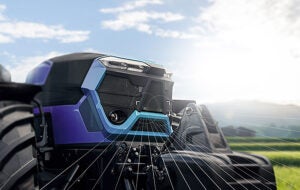Earth may be quickly reaching its maximum carrying capacity for human beings. Having recently surpassed 8 billion wandering souls, we’re lurching ever-closer to projected estimates for what our planet might reasonably sustain while still supporting its diversity of life. The sobering reality is that Earth’s bounties are finite and, rest assured, if we don’t put ourselves in check, our hefty resource consumption rate will do it for us.
While there are a multitude of critical factors scientists consider when defining this population threshold, the stability of our agricultural complex is central among them. But, we’re in a bit of a sticky predicament. You see, with current agricultural output and nutritional needs, we may reasonably have enough food to support approximately 10 billion people. And that’s assuming nothing changes. Unfortunately, change (especially the planetary kind) is becoming inevitable.
As a species, it’s not only that we have a rapidly growing number of mouths to feed. The issue is that we have a growing number of mouths to feed in addition to mounting food production setbacks. And these aren’t trivial problems. Food producers face challenges in crop yield due to an increase in unstable and extreme weather patterns, soil degradation and a decline in soil fertility, a scourge of pests and diseases resistant to control measures, and problems with water management. But, how does humanity solve these complex issues as they evolve? It’s like trying to build an airplane while flying … with parts that are continually outdated. In this case, we tap into the weird world of artificial intelligence.
Hollywood has done a thorough job of incepting an idea of what artificial intelligence (AI) looks like. When I say “AI,” there’s a strong likelihood that you picture Arnold Schwarzenegger reaching out to Sarah Connor and mechanically saying, “Come with me if you want to live.”

Thankfully, real-world AI is much less action-packed — at least in the Terminator sense.
Artificial intelligence is an area of science and engineering that focuses on developing systems that perform tasks requiring human-like cognitive function. This includes things like learning, reasoning, problem-solving, and understanding natural language. It does this through advanced algorithms, data-crunching, and beefy computational power.
The most impactful part of some AI is that it has the ability to continually learn and refine the way it solves problems — something a traditional computer program simply can’t do. So, rather than feed a computer a problem, relying on human developers to define the rigid logic and rules for how to solve it, some AI has the freedom to think outside the box. It can digest enormous amounts of information, recognize patterns in complex sets of data, and create its own set of rules to solve the given prompt to achieve a desired outcome. This dynamic problem-solving makes AI a formidable tool to use on large-scale data sets, with shifting variables and unforeseen factors that may arise.
Which seems to describe the evolving demand on agriculture, no?
Feed a machine learning AI system data from historical weather patterns, soil moisture, crop need, and satellite imagery? It could give you minute-by-minute suggestions for irrigation programs that minimize water waste and ultimately maximize overall crop yield. Ask AI to predict the safest way to control a ravaging pest population? It may spit out a plan that includes a finely tuned combination of natural predators, physical barriers, and crop rotations. The beauty is that strategies like this also include the ability for AI to pivot on-the-fly if given new information, saving time, saving money, and sparing dwindling natural resources.

It’s wildly important to note that AI isn’t a silver bullet (yet). There are still quite a few challenges that make widescale adoption of the technology difficult. Much of the infrastructure to support AI (like reliable access to cloud computing) is not yet available in rural areas. Additionally, the upfront costs of integration and data sampling is quite high, especially for smaller farms, which poses a risk of technological inequality favoring larger corporate operations. Finally, with something as critically important as food supply, any predictive algorithms will need to be thoroughly vetted before rollout, lest an unknown computer error lead us down a devastatingly wrong path.
Yet it is hopeful.
As a species, we face growing challenges on our little, iron, space rock — many of which have yet to be seen. But in the modern era of science and technology, our cleverness may save us yet. And rather than bring about a nuclear holocaust, perhaps our real-life Skynet will help us to usher in the sustainability of human existence on our Mother Earth.
Leah Elson is an American scientist, author, and public science communicator. She has two pit bulls and sixty eight houseplants.



